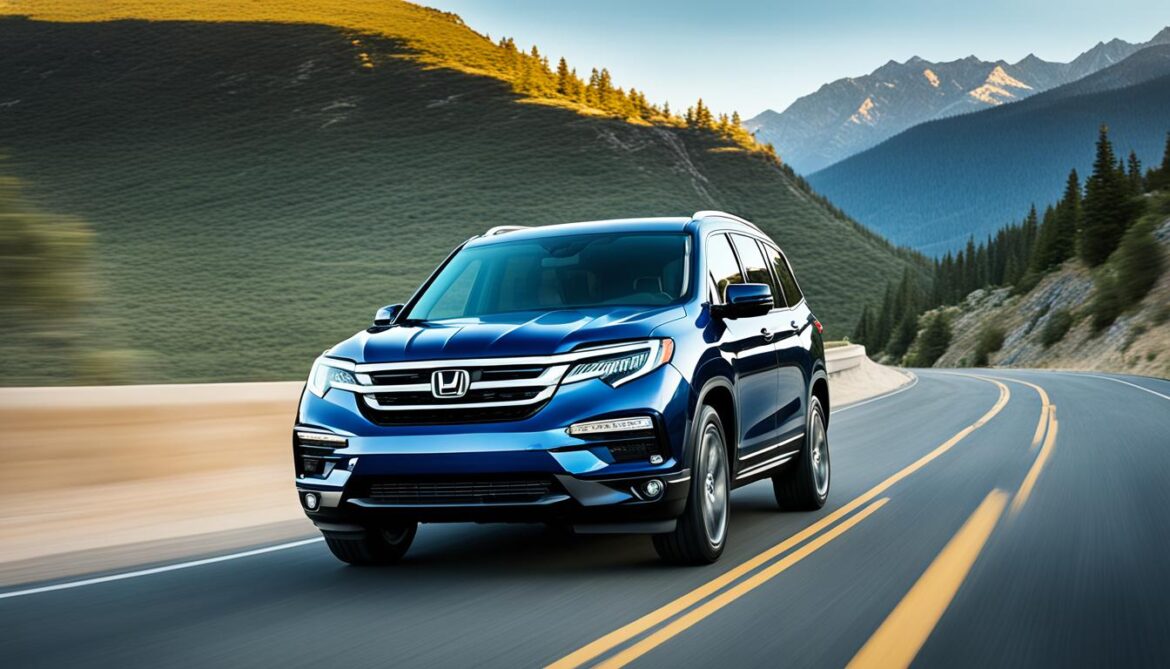When it comes to purchasing a reliable and long-lasting SUV like the Honda Pilot, it’s important to know which model years to avoid. In this buyer’s guide, we will discuss the Honda Pilot years that have had the most common problems and reliability issues. By avoiding these specific model years, you can make a more informed decision when purchasing a used Honda Pilot.
Buying a used car can be a challenging task, especially when it comes to ensuring its reliability. The Honda Pilot, known for its spaciousness and versatility, is a popular choice among SUV enthusiasts. However, not all model years of the Honda Pilot are created equal. Some years have exhibited more reliability issues and common problems than others, making them less desirable options for prospective buyers.
In this buyer’s guide, we will provide you with detailed information about the Honda Pilot model years to avoid, the common problems associated with the vehicle, and highlight the reliable model years to consider when purchasing a used Honda Pilot.
Key Takeaways:
- Knowing which Honda Pilot model years to avoid can help you make a more informed decision when purchasing a used vehicle.
- The 2003, 2005, 2009, 2011, 2013, and 2016 Honda Pilot models have had more common problems and reliability issues compared to other years.
- Some of the common problems with the Honda Pilot include transmission failures, excessive oil consumption, peeling paint, recurring fault codes, fuel injector failure, and brake issues.
- Despite the issues, there are several reliable Honda Pilot model years, such as 2004, 2006, 2007, 2008, 2010, 2012, 2014, 2015, 2017, 2018, 2019, and 2020.
- When purchasing a used Honda Pilot, consider the model years with a good balance of reliability and modern features, such as the 2010 model or the 2015-2020 models (excluding 2016).
The Honda Pilot Years to Avoid
The Honda Pilot has had a few model years with more reliability issues compared to others. It’s crucial to be aware of these specific years to avoid any potential problems. The Honda Pilot years to avoid include the 2003, 2005, 2009, 2011, 2013, and 2016 models. These years have had more common problems and are generally considered less reliable compared to other model years.
It’s important to note that not every Honda Pilot from these years will have issues, but statistically, they are more susceptible to problems. By avoiding these model years, prospective buyers can reduce the risk of encountering common problems and improve their chances of purchasing a more reliable vehicle.
Common Problems With The Honda Pilot
The Honda Pilot has encountered several common problems over the years. Some of the most notable issues include transmission failures, excessive oil consumption, peeling paint, recurring fault codes, fuel injector failure, and brake issues. These problems can vary in severity but should be taken into consideration when evaluating which model year to purchase.
Transmission Failures
One of the most significant problems that Honda Pilots have experienced is transmission failure. This issue is particularly prevalent in the 2003 model, although there have been isolated incidents in other years as well. Transmission failure can be a costly repair and may pose safety concerns while driving.
Excessive Oil Consumption
Excessive oil consumption is a common problem in certain model years of the Honda Pilot. While this issue may not be major as long as the owner is aware of it, it can lead to engine damage if not addressed properly. It is important for owners to monitor oil levels and replenish as needed to mitigate this issue.
Peeling Paint
Peeling paint is primarily a cosmetic issue in the Honda Pilot. While it does not affect the overall performance or reliability of the vehicle, it can lead to more severe problems if exposed to wet weather or consistent rust. Potential buyers should be aware of this issue and consider the potential cost of repainting.
Recurring Fault Codes
Some Honda Pilots have experienced recurring fault codes, which can be frustrating and potentially indicative of more serious issues. While recurring fault codes are typically not dangerous, they can lead to unintentional damage if ignored or misunderstood. It is crucial to address any recurring fault codes promptly to avoid potential problems.
Fuel Injector Failure
Fuel injector failures have been observed in Honda Pilots, especially in more recent models like the 2016. This can be a costly repair, often occurring around 60,000 miles. Potential buyers should research this issue and consider the potential financial implications before purchasing a Honda Pilot.
Brake Issues
Some Honda Pilots, particularly those from 2003 to 2017, have experienced warped brake rotors and vibrations while braking. While this issue can be unsettling, it can generally be fixed by replacing the affected component. Potential buyers should consider the potential cost of brake repairs and factor it into their decision-making process.
Transmission Failures
One of the most serious problems that Honda Pilots have experienced is transmission failure, particularly in the 2003 model. While there have been some isolated incidents of transmission failures in other Pilot models, it is most prevalent in the 2003 model. Transmission failure can be a costly repair and may lead to safety concerns while driving.
It’s important to note that transmission issues can vary in severity and frequency depending on the year and individual vehicle. However, the 2003 Honda Pilot stands out as a model that has had a higher incidence of transmission problems compared to others. These problems can range from slipping gears and hard shifting to complete transmission failure.
Transmissions are a vital component of any vehicle, responsible for transmitting power from the engine to the wheels. When the transmission fails, it can result in a loss of power, an inability to shift gears properly, and even complete vehicle breakdown. This can not only leave you stranded on the side of the road but also pose potential safety risks.
Repairing or replacing a faulty transmission can be a significant expense, costing thousands of dollars. It’s essential to consider this potential cost when evaluating the overall value and reliability of a used Honda Pilot.
| Model Year | Transmission Issues |
|---|---|
| 2003 | High incidence of transmission failures |
| 2004 | Sporadic transmission issues reported |
| 2005 | Some transmission problems reported |
| 2006 | Occasional transmission issues documented |
| 2007 | Minor transmission problems reported |
| … | … |
Excessive Oil Consumption
Excessive oil consumption is a common issue in certain model years of the Honda Pilot. While it is not a major problem as long as the owner is aware of it, it can lead to engine damage if not properly addressed. Keeping an eye on oil levels and replenishing as needed can help mitigate this issue.
| Model Year | Excessive Oil Consumption |
|---|---|
| 2008 | Yes |
| 2010 | Yes |
| 2012 | Yes |
It’s important to note that not all Honda Pilot model years experience excessive oil consumption. The table above highlights some specific years where this issue has been reported more frequently. Owners of these models should regularly check their oil levels and consult a professional if they notice any significant decrease.
Peeling Paint
Peeling paint is a common cosmetic issue in the Honda Pilot, but it does not impact the overall performance or reliability of the vehicle. However, if the peeling paint is exposed to wet weather or consistent rust, it can lead to more severe problems. Potential buyers should be aware of this issue and consider the potential cost of repainting to maintain the vehicle’s appearance and protect it from further damage.
Peeling paint may not affect the functionality of your Honda Pilot, but it can diminish its visual appeal and potentially lead to other issues. Here’s why:
- Aesthetic concerns: Peeling paint is unsightly and can detract from the overall appearance of your Honda Pilot. It may make your vehicle look older and neglected.
- Potential for rust: When paint starts to peel, it exposes the underlying metal surface to moisture and air. This can lead to rust formation, which can spread and cause structural damage if left unattended.
- Decreased resale value: If you plan to sell or trade-in your Honda Pilot in the future, peeling paint can significantly decrease its resale value. Potential buyers may view it as a sign of poor maintenance or neglect.
While repainting your Honda Pilot can be an effective solution, it’s essential to address the underlying cause of the peeling paint to prevent recurrence. Consult with a professional automotive painter to assess the extent of the damage and determine the best course of action.
How to prevent peeling paint:
- Regularly wash and wax your Honda Pilot to protect the paint from external elements.
- Park your vehicle in a shaded area or use a car cover to shield it from direct sunlight and harsh weather conditions.
- Repair any scratches or chips promptly to prevent moisture from penetrating the paint layer.
By taking proactive measures to maintain the paint condition of your Honda Pilot, you can preserve its appearance and potentially avoid more significant issues down the road.
| Pros | Cons |
|---|---|
| – Cosmetic issue | – Can lead to rust |
| – Easy to address with repainting | – May decrease resale value |
| – Can be prevented with proper maintenance |
Recurring Fault Codes
Recurring fault codes in Honda Pilots can be quite frustrating for owners, and they may also indicate the presence of more serious underlying problems. While these fault codes are not typically dangerous, they can lead to inadvertent damage if left unaddressed or misunderstood. Therefore, it is crucial to promptly address any recurring fault codes to prevent potential issues and ensure the smooth operation of your Honda Pilot.
If you encounter recurring fault codes in your Honda Pilot, it is recommended to consult a certified mechanic or take your vehicle to an authorized Honda service center. Trained professionals will be able to accurately diagnose and resolve the issue, ensuring that your Pilot runs optimally and minimizing the risk of further complications. Regular maintenance and prompt attention to fault codes can help maintain the performance and longevity of your vehicle.
Stay informed about the common fault codes associated with your specific Honda Pilot model year to be better equipped to identify any recurring issues. Addressing these fault codes with the help of professionals will provide peace of mind and prevent potential problems from exacerbating over time.
Common Honda Pilot Fault Codes:
- Engine Misfire Detected
- Oxygen Sensor Heater Circuit Malfunction
- Evaporative Emission Control System Leak Detected
- Catalytic Converter Efficiency Below Threshold
- Manifold Absolute Pressure/Barometric Pressure Circuit High
It is essential to note that fault codes can vary depending on the specific issue and the year of the Honda Pilot model. Consult the vehicle’s manual or an authorized Honda service center for detailed information on the fault codes specific to your model year.
| Fault Code | Description | Potential Causes |
|---|---|---|
| P0300 | Engine Misfire Detected | Spark plug failure, ignition coil issues, fuel system problems |
| P014C | Oxygen Sensor Heater Circuit Malfunction | Faulty oxygen sensor, issues with the sensor’s electrical connections |
| P0455 | Evaporative Emission Control System Leak Detected | Loose or damaged fuel cap, leaks in the evaporative emission control system |
| P0420 | Catalytic Converter Efficiency Below Threshold | Faulty catalytic converter, oxygen sensor problems |
| P0108 | Manifold Absolute Pressure/Barometric Pressure Circuit High | Issues with the manifold absolute pressure/barometric pressure sensor, problems in the sensor circuit |
Remember, attending to recurring fault codes promptly can help you avoid unexpected breakdowns, costly repairs, and potential safety hazards. If you experience recurring fault codes or have any concerns about your Honda Pilot’s performance, don’t hesitate to seek professional assistance.
Fuel Injector Failure
Fuel injector failures have been observed in Honda Pilots, especially in more recent models like the 2016. This can be a costly repair, often occurring around 60,000 miles. Potential buyers should research this issue and consider the potential financial implications before purchasing a Honda Pilot.
Fuel Injector Failure: Potential Consequences
When fuel injectors fail in Honda Pilots, it can lead to a variety of issues. The engine may experience misfires, reduced power, and poor fuel economy. Ignoring this problem can cause further damage to the fuel system and potentially result in a breakdown or costly repairs.
Fuel Injector Failure: Causes and Solutions
There are several factors that can contribute to fuel injector failure in Honda Pilots. These include contaminated fuel, clogged injectors, and electrical problems. Regular maintenance, such as using high-quality fuel, replacing fuel filters, and performing injector cleaning, can help prevent fuel injector failure. If the problem persists, it is recommended to consult a qualified mechanic for diagnosis and repair.
Fuel Injector Failure: Signs to Look Out For
- Engine misfires or hesitation
- Poor acceleration
- Decreased fuel efficiency
- Increased exhaust emissions
- Engine stalling
Should any of these signs be present, it is important to have the fuel injectors inspected and repaired if necessary.
Brake Issues
While the Honda Pilot is generally known for its reliability, some models have experienced brake issues. Particularly for Honda Pilots manufactured between 2003 and 2017, there have been instances of warped brake rotors and vibrations while braking. Although this problem can be unsettling, it can typically be resolved by replacing the damaged brake component.
When considering the purchase of a Honda Pilot, potential buyers should factor in the potential cost of brake repairs. While this issue is not common across all models and years, it is essential to be aware of the possibility and evaluate its impact on the decision-making process.
| Model Year Range | Brake Issues |
|---|---|
| 2003-2017 | Warped brake rotors and vibrations while braking |
Reliable Honda Pilot Models
Despite the aforementioned problems, the Honda Pilot has several model years that are known for their reliability. These include the 2004, 2006, 2007, 2008, 2010, 2012, 2014, 2015, 2017, 2018, 2019, and 2020 models. These years have a low incidence of part failures and other severe issues commonly associated with older Pilot models.
Which Honda Pilot Models Are Good To Buy Used
When it comes to purchasing a used Honda Pilot, it’s important to choose a model that offers reliability and modern features. Whether you’re considering an older Pilot or a more recent one, there are certain model years that stand out as good options for buyers.
Older Pilot Models
Among the older Pilot models, the 2010 model is highly recommended. This model strikes a good balance between reliability and modern features, making it a popular choice for used car buyers. With its spacious interior and dependable performance, the 2010 Honda Pilot is a solid option for those in search of a used SUV.
Recent Pilot Models
For buyers looking for a more recent model, the 2015-2020 Honda Pilot models (excluding the 2016) are generally regarded as reliable choices. These models offer strong performance, ample space, and updated features, making them desirable options for used car buyers. Whether it’s for family trips or everyday commuting, the 2015-2020 Honda Pilot models can provide a comfortable and reliable driving experience.

Overall, when searching for a used Honda Pilot, considering these recommended model years can help you make an informed decision. Whether it’s the dependable 2010 model or the more recent 2015-2020 models, each offers its own advantages and can be a reliable choice for any buyer.
Conclusion
In conclusion, the Honda Pilot, like any other vehicle, has had its fair share of reliability issues and problems over the years. However, this doesn’t mean that all Honda Pilot models should be avoided. There are still many reliable options available for potential buyers.
When searching for a dependable and long-lasting SUV, it is best to steer clear of the 2003, 2005, 2009, 2011, 2013, and 2016 Honda Pilot model years. These particular years have been known to have more common problems and are generally considered less reliable compared to other model years. By avoiding these years, potential buyers can increase their chances of purchasing a Honda Pilot that will provide a more trouble-free ownership experience.
It is also important to consider the common problems associated with the Honda Pilot when evaluating which model to purchase. Transmission failures, excessive oil consumption, peeling paint, recurring fault codes, fuel injector failure, and brake issues have been observed in various model years. While these problems can vary in severity, being aware of them will allow potential buyers to make a more informed decision and potentially avoid expensive repairs down the line.
FAQ
What are the Honda Pilot years to avoid?
The Honda Pilot years to avoid include the 2003, 2005, 2009, 2011, 2013, and 2016 models.
What are some common problems with the Honda Pilot?
Some common problems with the Honda Pilot include transmission failures, excessive oil consumption, peeling paint, recurring fault codes, fuel injector failure, and brake issues.
Which Honda Pilot model year is known for transmission failures?
The 2003 Honda Pilot is known for transmission failures, although there have been some isolated incidents in other model years as well.
Does the Honda Pilot have issues with excessive oil consumption?
Yes, certain model years of the Honda Pilot have been known to have issues with excessive oil consumption, which can lead to engine damage if not addressed.
Is peeling paint a common problem in the Honda Pilot?
Yes, peeling paint is a cosmetic issue that has been observed in certain model years of the Honda Pilot. While it doesn’t affect performance, it can lead to more severe problems if exposed to wet weather or rust.
Are there recurring fault codes in Honda Pilots?
Yes, some Honda Pilots have been known to experience recurring fault codes. While usually not dangerous, they can lead to unintentional damage if ignored or misunderstood.
Do Honda Pilots have fuel injector failures?
Yes, fuel injector failures have been observed in Honda Pilots, especially in more recent models like the 2016. This can be a costly repair to address.
Are there any brake issues with the Honda Pilot?
Some Honda Pilots, particularly those from 2003 to 2017, have experienced warped brake rotors and vibrations while braking. While unsettling, this issue can generally be fixed by replacing the broken component.
Which Honda Pilot model years are known for their reliability?
The Honda Pilot model years known for their reliability include 2004, 2006, 2007, 2008, 2010, 2012, 2014, 2015, 2017, 2018, 2019, and 2020.
Which Honda Pilot models are good to buy used?
Among the older Pilot models, the 2010 model offers a good balance of reliability and modern features. For more recent models, the 2015-2020 models (excluding the 2016) generally provide reliable performance and ample space.







